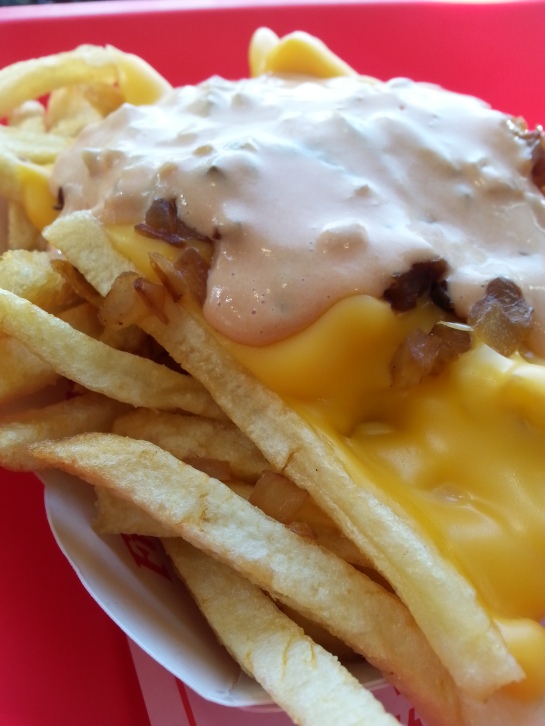March to the beat of your own drum. Generally, we talk about fancy-pants burgers, which makes sense because that’s what we like. There have and will continue to be exceptions to that rule not only because we see you burger-traditionalists, and we respect you, but also because not all delicious burgers need come topped with 27 syllables worth of cheese and exotic vegetation. Over the course of our handful of hat-tips to the simpler burgers out there we’ve even come to coin the phrase “California Style” which, if your memory fails is, lettuce, tomato, pickle, onion, and Thousand-Island dressing. What we have managed to NOT do (until now anyway) is pay homage to the creator of that style. To give credit to the establishment who re-wrote the fast food bible that WackDonald’s imposed upon the world. To shout out the institution that is a culinary pillar of Southern California, and whose quality and consistency will keep them adorned in that accolade. Today friends, we are going to In ‘N Out.
This is a burger blog about Southern California’s offerings, and if you’re reading this (you are), you probably live in Southern California and you probably like burgers. If both of those things are true, I’d bet the farm that you don’t need me to tell you about In ‘N Out’s food. So, I won’t. It’s great. You know that. Sometimes I crave their food in a way that can only be cured by their food. You probably do too. In very few contexts, processed-pasteurized-American-cheese-food-product is pure joy and the greatest of those contexts is known as “Animal Fries.” None of this is news to you. However, you may not be rich with fun facts about the company that has become a staple to residents and a to-do list top-liner for everyone who visits Southern California. Let’s change that.

If you haven’t read Fast Food Nation, you should; though it will probably have you questioning (and rightfully so) not only what you eat but also just how shameful you should feel about it. Though the whole book is informative, the very beginning describes Southern California as the Fertile Crescent of hamburgers and how that came to pass, which, if you’re like me (fat), is simply fascinating. Ray Crock, the industrious entrepreneur who took McDonald’s from one popular restaurant to a National force, created a blueprint that nearly all other fast food chains modeled their businesses after: Prime convenient locations and plenty of them, profitability through extremely low costs of both food and labor, market saturation, and a franchise business structure. In N’ Out’s philosophy agrees with exactly zero of those things. They only have approximately 300 retail locations despite nearly 70 years in operation, are entirely privately owned by the family that started the business and have offered no franchises, take excellent care of their employees both financially and in terms of available benefits, and have higher food costs so as not to compromise the company’s quality standards. If that wasn’t enough differentiation, the diversity of the menu is nil (there are basically a total of 4 things: burgers, fries, shakes, sodas, though one has a couple of style options per category), every store looks identical, and the pro-Jesus culture is subtle but visible on the bottom of every cup. So according to the fast food model followed by most of their competitors, In ‘N Out does everything wrong. Somehow that doesn’t equate to failure. I implore anyone to find an uncrowded location at mealtime.
In ‘N Out is another solid example of “if you build it, they will come.” Uncompromising standards yield consistent quality, and that makes for consistently happy customers, who are loyal. This chain’s contribution to SoCal’s burger Mesopotamia is an important one, and one that I suspect will continue to enjoy slow and steady growth at whatever pace it chooses, as has been the case thus far. If it ain’t broke…
– Geoff Sawyer



